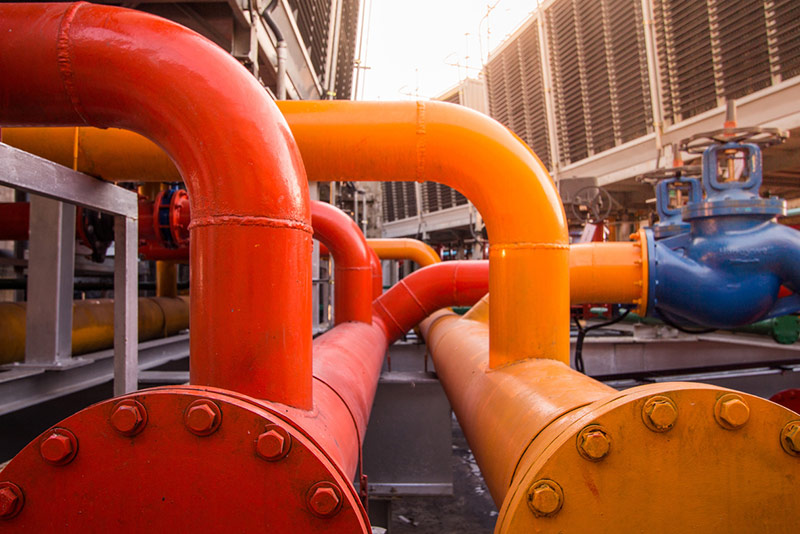Factories throughout Hamilton rely on industrial chiller lines for a variety of applications. This important piece of equipment keeps equipment cool even when it is running at maximum output. Industrial chillers work using a tank that keeps water at a cold temperature between -1 and +1 degrees F. This means that factories can run their equipment without it overheating from production.
Industrial chiller line applications
As you can imagine, there are nearly countless applications for industrial chiller lines since machines and equipment prone to overheating can be found in almost every manufacturing setting. Some of the most common applications for industrial chillers include:
- Plastic injection moulding
- Food and beverage production
- Pharmaceutical and chemical production
- Commercial printing
- Vehicle manufacturing
- Metal finishing
- Composite manufacturing
- Laser cutting
- Tool and die
- Semi-conductor
How do industrial chillers work?
During the manufacturing process, heat is generated from the operation of equipment, burning, or friction. The purpose of industrial chillers is to draw heat away from this equipment, thereby allowing it to run for longer periods of time and maximizing its lifespan. This helps to allow for optimal efficiency and maximum uptime of equipment.
These chillers differ from the HVAC systems you may have in your Hamilton home or office building. With an industrial chiller, you have a system that pumps cold fluid from the chiller to your production area to draw heat away from your equipment. The system then returns the liquid (which has now been warmed up by your process) back to the chiller. By continually drawing heat away from your equipment, the industrial chiller adds an important layer of protection to your operation.
Industrial chillers have four main components which each play an important role:
- Evaporator – In the first stage, the liquid flows into the evaporator, where it is heated up until it becomes a low-pressure gas.
- Compressor – in the next stage, the low-pressure gas enters the compressor where it is converted into a high-pressure gas before the heat is released into the condenser.
- Condenser – Inside the condenser, the high-pressure gas is then cooled either by condenser water or by ambient air. In this process, the gas is condensed into a low-pressure and low-temperature liquid.
- Expansion valve – In the final step, the liquid refrigerant then flows into the expansion valve, where it re-enters the evaporator, and begins the cycle again.
Contact Wentworth Plumbing today.
At Wentworth Plumbing, we offer a full range of industrial plumbing services, including installing and maintaining industrial chiller lines. If you require an experienced Hamilton-based industrial plumber to provide installation or service for your industrial chillers, contact us today.

